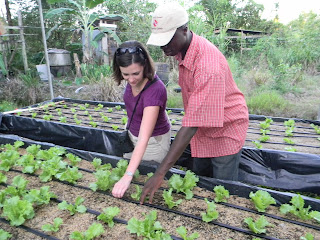Peace Corps Volunteers Continue Spirit of Service through Farmer to Farmer

Students in El Cerron learn about seeds, soil, and environmental protection This past month Partners’ Farmer to Farmer Program had the opportunity to send certified forester Glen Juergens and his wife Patricia Juergens, in collaboration with the Sustainable Harvest International and their local counterpart FUCOHSO (Fundación Cosecha Sostenible Honduras), to Honduras to work with local communities and families to provide assistance in reforestation, nutrition education, and environmental education. The Juergens have been to Honduras multiple times over the years, beginning with the first time they met during their Peace Corps service in the country in the 1970s. “We thoroughly enjoyed working with individuals, families, and FUCOHSO employees which reminded us of the time when we were PCVs. The highlight of the trip for us was being able to take a few days after the work was completed with FUCOHSO and travel to some of the communities we worked at as PCVs. We were delighte...



